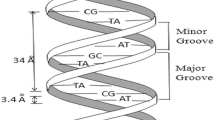Abstract
The need for computation speed is ever increasing. A promising solution for this requirement is parallel computing but the degree of parallelism in electronic computers is limited due to the physical and technological barriers. DNA computing proposes a fascinating level of parallelism that can be utilized to overcome this problem. This paper presents a new computational model and the corresponding design methodology using the massive parallelism of DNA computing. We proposed an automatic design algorithm to synthesis the logic functions on the DNA strands with the maximum degree of parallelism. In the proposed model, billions of DNA strands are utilized to compute the elements of the Boolean function concurrently to reach an extraordinary level of parallelism. Experimental and analytic results prove the feasibility and efficiency of the proposed method. Moreover, analyses and results show that a delay of a circuit in this method is independent of the complexity of the function and each Boolean function can be computed with O(1) time complexity.



















Similar content being viewed by others
References
Haefner JW, Cicirelli F, Giordano A, Mastroianni C (2019) Improving Efficiency in Parallel Computing Leveraging Local Synchronization. International Conference on Numerical Computations: Theory and Algorithms. Springer, Cham
Beiki Z, Zare Dorabi Z, Jahanian A (2018) Real parallel and constant delay logic circuit design methodology based on the DNA model-of-computation. Microprocess Microsyst 61:217–226
Adleman Leonard M (1994) Molecular computation of solutions to combinatorial problems. Science 266(5187):1021–1024
Amos M, Gibbons A, Hodgson D (1999) Error-resistant implementation of DNA computations. In DNA Based Computers II 44: 151–161
Winfree E (1998) Universal Computation via Self-assembly of DNA: Some Theory and Experiments in Landweber and Baum editors, DNA Based Computers II. In Proceedings of the Second DIMACS Workshop, DIMACS Series in Discrete Mathematics and Theoretical Computer Science 44: 172–190
Wang Z, Ji Z, Su Z, Wang X, Zhao K (2016) Solving the maximal matching problem with DNA molecules in Adleman-Lipton model. Int J Biomath 9:1650019
Zhao K, Wang Z, Lu Y, Qin J, Tan J (2015) A new biologically DNA computational algorithm to solve the k-vertex cover problem. J Comput Theor Nanosci 12:524–526
Wang Z, Zhao K, Wang X, Huang W, Zou Q (2015) A biological computing algorithm to solve K-Closure problem. J Comput Theor Nanosci 12:1818–1820
Sanches CAA, Soma NY (2016) A general resolution of intractable problems in polynomial time through DNA computing. Biosystems 150:119–131
Wang Z, Pu J, Cao L, Tan J (2015) A Parallel Biological Optimization Algorithm to Solve the Unbalanced Assignment Problem Based on DNA Molecular Computing. In International Journal of Molecular Sciences 16: 25338–25352
Sallam AA, Kazem M, Askar AB (2016) Solving Minimum Independent Dominating Set with Adelman-Lipton model. In International Advanced Research Journal in Science, Engineering and Technology, 3: 50–53
Wang H (1961) Proving theorems by pattern recognition-II. In Bell Labs Technical Journal 40.1: 1–41
Mao C et. al (2000) Logical computation using algorithmic self-assembly of DNA triple-crossover molecules. In Nature 407.6803: 493
Rothemund PWK, Papadakis N, Winfree E (2004) Algorithmic self-assembly of DNA Sierpinski triangles. In PLoS biology 2.12: e424
Barish RD, Rothemund PWK, Winfree E (2005) Two computational primitives for algorithmic self-assembly: copying and counting. Nano Lett 5(12):2586–2592
Amos M (2001) Theoretical and experimental DNA computation. Current trends in theoretical computer science: entering the 21st century. 614–630
Tsai S (2008) Using Sticker-based Model to Solve the Clique Problem on DNA-based Computing. In Convergence and Hybrid Information Technology, 2008. ICCIT’08. Third International Conference on. Vol. 1. IEEE
Sipser M (2012) Introduction to the Theory of Computation. Cengage Learning, 3rd edition
Linz P (2017) An introduction to formal languages and automata. Jones and Bartlett Learning, 6th edition
Hadjicostis CN (2020) Finite Automata Models. Estimation and Inference in Discrete Event Systems. Springer, Cham: 25–68
Seeman Nadrian C, Sleiman Hanadi F (2017) DNA nanotechnology. In Nature Reviews Materials 3: 17068
Cavallotti C, Pelucchi M, Frassoldati A (2018) Analysis of acetic acid gas-phase reactivity: Rate constant estimation and kinetic simulations. Proceedings of the Combustion Institute
Ambekar Anirudha, Chowdhury Arindrajit (2018) An experimental technique for determination of intrinsic burning rate constants of liquid fuels. Appl Therm Eng 135:238–245
Adleman Leonard M (1994) Molecular computation of solutions to combinatorial problems. Science 266(5187):1021–1024
Matthew JP (2008) ISU TAS. Homepage: http://www.cs.iastate.edu/lnsa/software.html, 5
Visual DSD (2020) [Available on] http://dsd.azurewebsites.net/beta/
Brun Y (2008) Solving NP-complete problems in the tile assembly model. Theor Comput Sci 395.1: 31–46
Author information
Authors and Affiliations
Corresponding author
Additional information
Publisher's Note
Springer Nature remains neutral with regard to jurisdictional claims in published maps and institutional affiliations.
Rights and permissions
About this article
Cite this article
Beiki, Z., Jahanian, A. Generic and scalable DNA-based logic design methodology for massive parallel computation. J Supercomput 79, 1426–1450 (2023). https://doi.org/10.1007/s11227-022-04693-z
Accepted:
Published:
Issue Date:
DOI: https://doi.org/10.1007/s11227-022-04693-z




